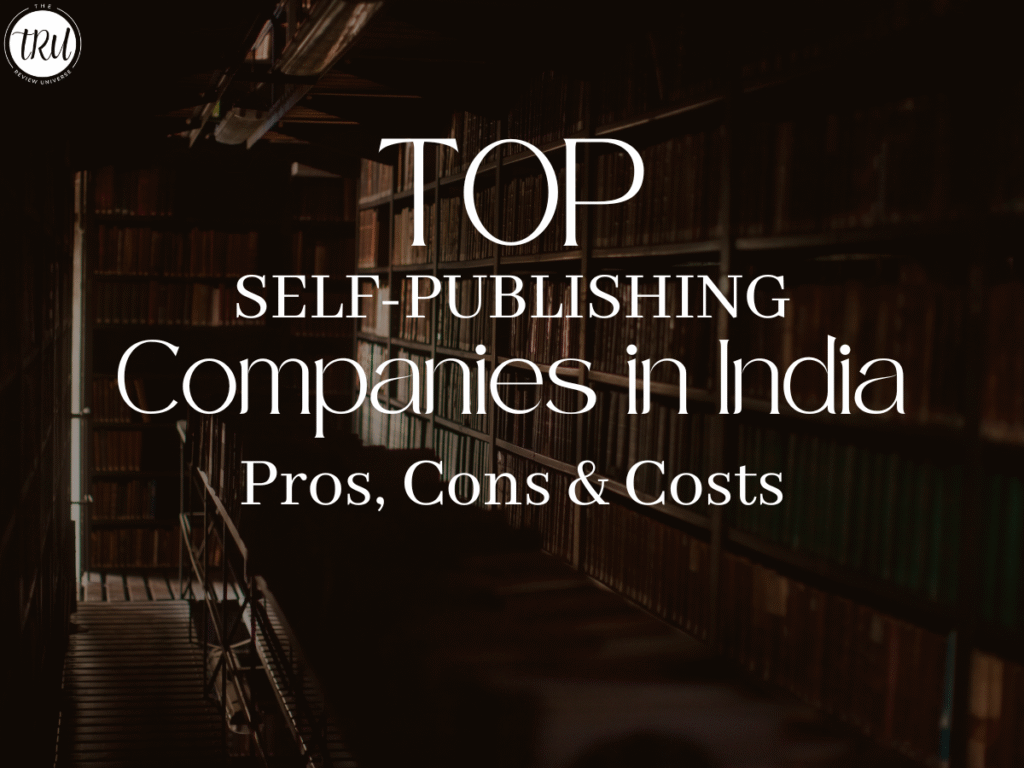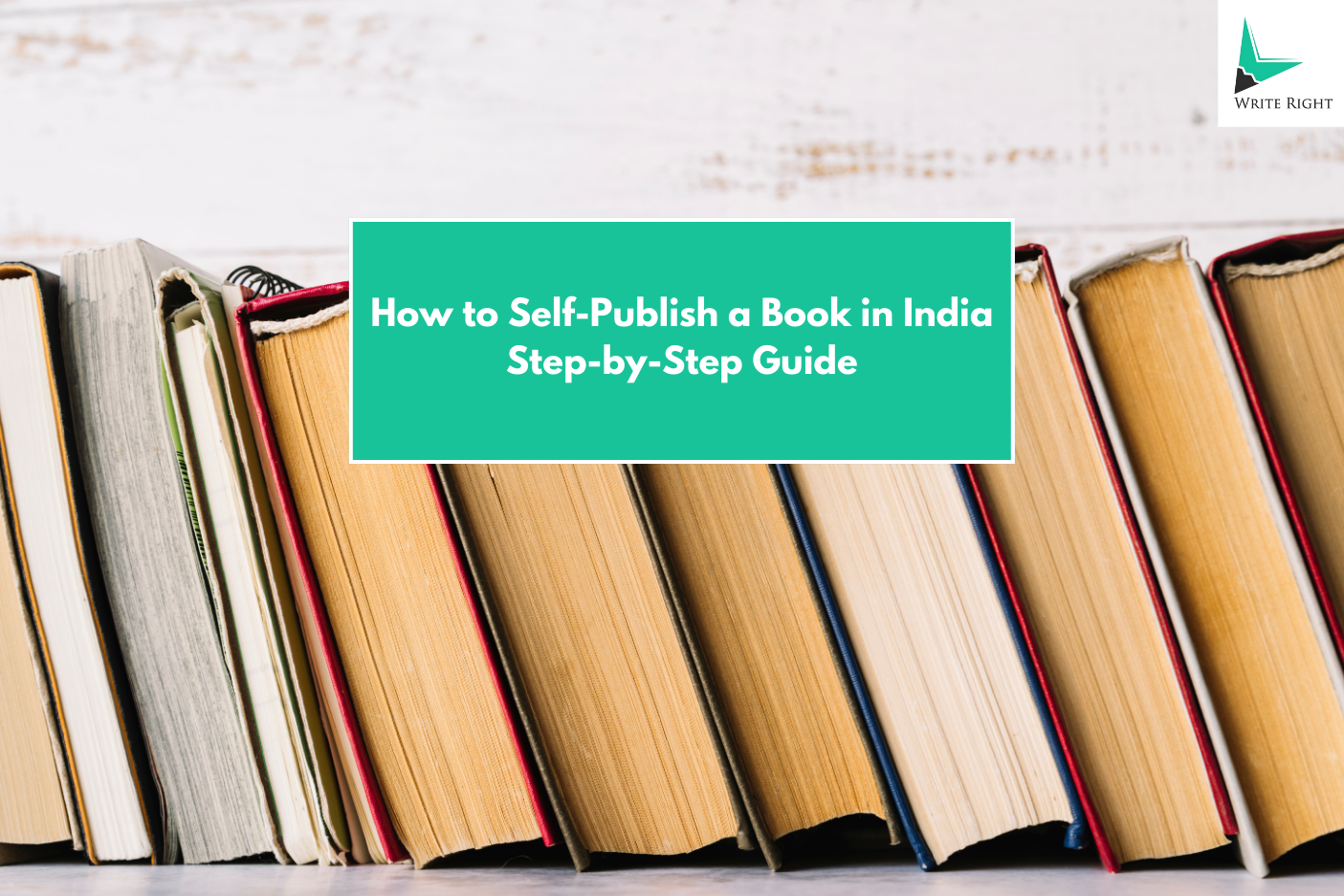Thinking about publishing your own book in India but worried about the costs? You’re not alone.
Many writers wonder how much self-publishing really costs and if it fits their budget. What if you could get a clear picture of all the expenses involved before you start? Knowing the true cost can help you plan better and avoid surprises.
You’ll discover the real expenses behind self-publishing in India, what affects the price, and smart ways to save money without compromising quality. Keep reading to make your dream of becoming a published author a reality—without breaking the bank.
Cost Breakdown Of Self Publishing
Self publishing in India involves various costs. Understanding these costs helps in planning your budget better. Each stage of publishing requires different investments. From preparing the manuscript to marketing the book, expenses add up quickly. Let’s break down the main costs you will face.
Editing And Proofreading Expenses
Editing is crucial for a professional book. It corrects grammar, style, and flow. Proofreading checks for spelling and punctuation mistakes. Freelance editors in India may charge between ₹5,000 to ₹20,000. The price depends on the book’s length and editor’s experience. Skipping this step can lower quality and reader trust.
Cover Design And Formatting Fees
The book cover grabs reader attention. A well-designed cover costs about ₹3,000 to ₹15,000. Formatting arranges text for print and eBooks. This ensures the book looks good on all devices. Formatting services generally cost ₹2,000 to ₹10,000. Both steps are vital for a professional look.
Printing And Distribution Costs
Printing costs depend on book size and quantity. Small batches cost more per copy but reduce upfront spending. Printing a 200-page paperback can cost ₹50 to ₹150 per copy. Distribution through online stores or local shops may involve fees or commissions. Plan these costs to avoid surprises later.
Marketing And Promotion Budget
Marketing helps readers find your book. Costs vary with strategies like social media ads or book launches. Basic online marketing might cost ₹5,000 to ₹20,000. Spending on promotion increases book visibility and sales potential. Allocate a budget to reach your target audience effectively.

Credit: thereviewuniverse.com
Choosing Affordable Publishing Platforms
Choosing affordable publishing platforms helps control self-publishing costs in India. It lets authors publish without spending too much money. Picking the right platform can save time and effort. It also provides flexibility to reach readers easily. Understanding different options helps make smart choices. This section covers common affordable publishing platforms for authors.
Print-on-demand Services
Print-on-demand (POD) lets authors print books only after an order. No need for large print runs or storage costs. POD platforms charge a small fee per book printed. This option reduces upfront investment for self-publishers. Authors can sell physical books online or in stores. Many POD services offer good print quality and fast delivery. It suits writers who want to test their book’s market first.
Ebook Publishing Options
Ebook publishing costs less than print. Authors can upload manuscripts to ebook platforms easily. These platforms distribute ebooks to online stores like Amazon and Google. No printing or shipping costs apply here. Ebook prices depend mainly on platform fees or royalties. Digital books reach readers worldwide instantly. This method fits authors seeking wider exposure with low expense.
Hybrid Publishing Models
Hybrid publishing blends traditional and self-publishing features. Authors pay some fees but get professional support. Services may include editing, design, and marketing help. Hybrid models share risks and profits between author and publisher. Costs vary based on chosen services and package levels. This option offers more control than traditional publishing. It suits authors wanting quality help without full publishing costs.
Diy Vs Professional Services
Deciding between self-publishing your book in India by yourself or hiring professional services can affect your budget and final product. Each option has pros and cons. Understanding these can help you make a better choice for your book project.
Benefits Of Doing It Yourself
Saving money is a big reason to self-publish. You control every step, from writing to design. This freedom lets you work at your own pace. Learning new skills like formatting or cover design adds value. You also keep full rights and profits from your book. Small mistakes may happen, but the experience is rewarding.
When To Hire Experts
Experts help when quality is critical. Professional editors catch errors you might miss. Designers create eye-catching covers that attract readers. Marketing specialists increase your book’s reach. If budget allows, hiring pros reduces stress. They bring experience that saves time and improves sales. For first-time authors, expert help is often worth it.
Balancing Quality And Cost
Finding the right balance is key. Cut costs on tasks you can handle well. Spend on areas that need skill, like editing. Research prices of different services carefully. Some companies offer packages for self-publishers. Prioritize quality where it matters most to readers. A good book with some DIY effort can succeed.

Credit: www.write-right.in
Cost-saving Tips For Authors
Publishing a book in India can be costly. Authors want to save money without losing quality. Smart choices help reduce expenses. Simple strategies make self-publishing easier and cheaper. Here are some useful tips to keep costs low.
Utilizing Free Design Tools
Book cover and layout design can be expensive. Free design tools offer great help. Tools like Canva and GIMP let authors create covers easily. These tools have templates and options for customization. Learning basic design skills saves money. You get a professional look without hiring a designer.
Leveraging Social Media For Marketing
Marketing a book can cost a lot. Social media platforms provide free promotion options. Authors can share updates, teasers, and reviews online. Engaging with readers builds a loyal audience. Platforms like Facebook, Instagram, and Twitter reach many people. Regular posts increase book visibility without spending money.
Networking With Other Authors
Connecting with other writers opens doors. Authors can exchange advice and resources. Group promotions and joint events lower marketing costs. Experienced authors share tips on saving money. Networking creates support and motivation. It helps authors avoid common mistakes and expenses.
Legal And Isbn Costs In India
Publishing a book in India involves some legal steps and costs. Legal and ISBN expenses are important for self-publishers. These costs help protect your work and make it available to readers. Understanding these fees helps plan your budget better.
Obtaining Isbns On A Budget
ISBN stands for International Standard Book Number. It is a unique code for every book edition. In India, the government agency provides ISBNs for free to Indian authors and publishers. Authors can apply online through the ISBN portal. Getting ISBNs for free saves money. Authors should apply early to avoid delays.
Copyright Registration Fees
Copyright protects your book from being copied. In India, copyright registration is optional but recommended. The fee for registering a literary work is about ₹500 for an individual. Registration takes a few months to complete. This small cost secures your legal rights over the book.
Legal Considerations For Self Publishers
Self-publishers must follow copyright and publishing laws. Avoid using others’ work without permission. Use original content or licensed materials. Keep contracts clear if working with editors or designers. Protect your rights by understanding basic publishing laws. This helps avoid legal troubles later.
Maximizing Returns On Investment
Maximizing returns on investment is key for self-publishers in India. Spending money wisely helps authors earn more from their books. Understanding costs and sales techniques can boost profits. Smart planning saves time and money while reaching more readers.
Pricing Strategies For Indian Market
Set prices that match Indian buyers’ budgets. Keep book prices affordable but fair. Study similar books and their prices. Use low prices to attract more buyers. Offer discounts during festivals or special days. Price eBooks lower than printed books. Test different prices to see what sells best.
Effective Sales Channels
Sell books on popular online stores like Amazon India and Flipkart. Use local bookstores for printed copies. Explore regional platforms for wider reach. Share eBooks on apps like Kindle and Google Play Books. Attend book fairs and events to promote directly. Use social media to link to sales pages. Mix online and offline sales to increase income.
Building A Loyal Reader Base
Connect with readers by sharing stories and updates. Create newsletters to keep readers informed. Ask for reviews and feedback to improve. Offer free chapters or sample pages to attract interest. Engage with readers on social media regularly. Build trust by delivering quality content often. Loyal readers buy more books and recommend them.
Success Stories From Indian Self Publishers
Success stories from Indian self publishers show real possibilities. Authors across India publish books without big costs. They share their journeys, challenges, and wins. These stories inspire many new writers to start their own projects.
Case Studies Of Budget-friendly Projects
Many Indian authors publish books with very low budgets. One author spent under ₹10,000 to print and market a novel. They used online tools and local printers to save money. Another writer created an eBook that reached thousands without any printing cost.
These projects prove that self publishing does not need large funds. Smart planning and simple tools help keep costs low. Budget-friendly projects are common and successful in India.
Lessons Learned From Top Authors
Top Indian self publishers often share valuable lessons. They advise focusing on good writing first. Editing and cover design matter but can be affordable. Many suggest using social media to reach readers directly.
Authors say patience and consistency bring success. They warn against rushing the publishing process. Learning from mistakes helps improve future books and sales.
Inspiration For New Writers
New writers find hope in these self publishing stories. Ordinary people become published authors with effort and care. Success does not need a big publisher or large money.
Many start small and grow their audience step by step. These stories show every writer can share their story with readers. Self publishing in India is open to all dreamers.

Credit: www.youtube.com
Frequently Asked Questions
What Is The Average Cost Of Self-publishing A Book In India?
Self-publishing in India typically costs between ₹20,000 to ₹1,50,000 depending on services used.
How Much Does Book Editing Cost For Self-publishing In India?
Editing fees vary from ₹5,000 to ₹25,000, based on book length and editor experience.
What Are The Printing Costs For Self-published Books In India?
Printing costs usually range from ₹40 to ₹150 per copy, depending on quantity and quality.
Is Isbn Registration Free For Self-published Authors In India?
ISBNs are free from the government agency, but some platforms may charge for help.
How Much Should I Budget For Book Cover Design In India?
Cover design costs can be ₹3,000 to ₹15,000, depending on designer skills and complexity.
Are Marketing And Distribution Included In Self-publishing Costs?
Marketing and distribution are separate and can cost extra, depending on your strategy and reach.
Can I Self-publish A Book Digitally Without High Costs In India?
Yes, digital self-publishing platforms charge little or no upfront fees for eBook publishing.
Conclusion
Self-publishing in India offers many cost options to fit your budget. You can choose print, digital, or both, keeping expenses low or high. Planning your budget well helps avoid surprise costs later. Quality editing and cover design improve your book’s appeal.
Marketing adds to the cost but brings readers. Knowing these factors makes self-publishing clearer and easier. Start small, learn along the way, and grow step by step. Writing and sharing your story is worth every effort and rupee.